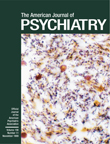Predictors of Success or Failure of Transition to Day Hospital Treatment for Inpatients With Anorexia Nervosa
Abstract
OBJECTIVE: Clinicians are under increasing pressure to transfer inpatients with anorexia nervosa to less intensive treatment early in their hospital course. This study identifies prognostic factors clinicians can use in determining the earliest time to transfer an inpatient with anorexia to a day hospital program. METHOD: The authors reviewed the charts of 59 female patients with anorexia nervosa who were transferred from 24-hour inpatient care to an eating disorder day hospital program. They evaluated the prognostic significance of a variety of anthropometric, demographic, illness history, and psychometric measures in this retrospective chart review. RESULTS: Greater risk of day hospital program treatment failure and inpatient readmission was associated with longer duration of illness (for patients who had been ill for more than 6 years, risk ratio=2.7), amenorrhea (for patients who had this symptom for more than 2.5 years, risk ratio=5.7), or lower body mass index at the time of inpatient admission (for patients with a body mass index of 16.5 or less, risk ratio=9.6; for those with a body mass index 75% or less than normal, risk ratio=7.2) or at the time of transition to the day hospital program (for patients with a body mass index of 19 or less, risk ratio=3.9; for those with a body mass index 90% or less than normal, risk ratio=11.7). CONCLUSIONS: Inpatients with anorexia nervosa who have the poor prognostic indicators found in this study are in need of continued inpatient care to avoid immediate relapse and higher cost and longer duration of treatment.



